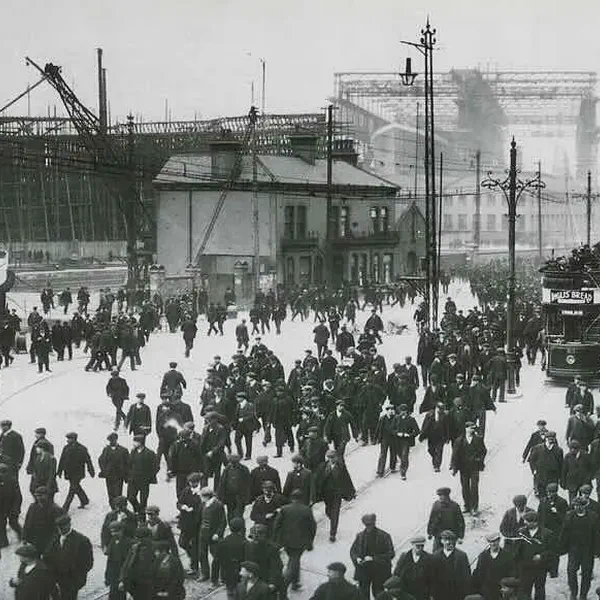On January 01, 1862 in Celtic History
Harland & wolff shipyard founded built the rms titanic

Harland & Wolff is a well-known shipyard located in Belfast, Northern Ireland. It has a rich history and is famous for its involvement in the construction of some of the most iconic ships in maritime history, most notably the RMS Titanic.
Here are some key points about Harland & Wolff Shipyard:
Founding
Harland & Wolff was founded in 1862 by Edward James Harland and Gustav Wilhelm Wolff. The shipyard was initially established as a small iron shipbuilding and repair business.
Early Shipbuilding
The shipyard quickly gained a reputation for the construction of high-quality ships. In the early years, they built a variety of vessels, including warships, cargo ships, and passenger liners.
RMS Titanic
Harland & Wolff is most famous for its role in constructing the RMS Titanic, one of the largest and most luxurious passenger ships of its time. The Titanic, along with its sister ships, the RMS Olympic and the HMHS Britannic, were built at the Belfast shipyard.
Shipbuilding Legacy
Beyond the Titanic, Harland & Wolff continued to be a prominent shipbuilder for many years, contributing to both military and commercial ship construction. It was also involved in ship repair and maintenance.
Decline and Restructuring
Like many shipyards, Harland & Wolff faced challenges in the latter half of the 20th century due to changing economic and industry dynamics. The shipyard went through various ownership changes and periods of decline.
Diversification
In more recent years, the shipyard has diversified its operations to include work on offshore structures, wind energy, and other engineering and construction projects. It is no longer solely focused on shipbuilding.
Historical Importance
Harland & Wolff holds a significant place in the history of Belfast and the maritime industry. The construction of the Titanic remains one of the most famous episodes in the shipyard’s history.
Belfast’s Shipbuilding Heritage
The shipyard is part of Belfast’s industrial heritage and has been a symbol of the city’s connection to shipbuilding and maritime endeavors.
While the shipyard’s shipbuilding activities have declined over the years, its historical significance and association with the Titanic continue to draw visitors and researchers interested in the ship’s history and the legacy of Harland & Wolff.
More From This Day

Annie Moore, 15, of County Cork, 1st Irish Immigrant through Ellis Island
January 01, 1892


Gladstone's Irish Church Act which disestablishes the Church of Ireland takes effect
January 01, 1871

Act of Union goes into Effect, merging the Kingdom of Great Britain and the Kingdom of Ireland
January 01, 1801

George Benn, businessman and historian of Belfast, is born in Tandragee, Co. Armagh
January 01, 1801



